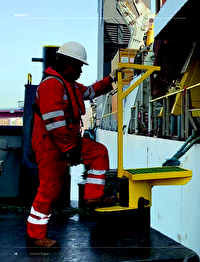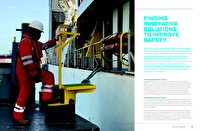Affirming the importance of safety
Dredging activities can be risky operations with hidden dangers among heavy machinery. In response, the dredging industry proactively maintains a high level of safety standards. A representative of contractors in the dredging industry, IADC encourages its own members, as well as non-members participating in the global dredging industry, to establish common standards and a high level of conduct in their worldwide operations. IADC’s members are committed to safeguarding their employees, continuously improving to guarantee a safe and healthy work environment and reducing the number of industry accidents and incidents to zero.
Recognising advancers of safety
IADC conceived its Safety Award to encourage the development of safety skills on the job and reward individuals and companies demonstrating diligence in safety awareness in the performance of their profession. The award is a recognition of the exceptional safety performance demonstrated by a particular project, product, ship, team or employee(s).
No submissions were received this year for the safety award granted to a supply chain organisation active in the dredging industry. This concerns subcontractors and suppliers of goods and services. In total, 11 submissions were received for the dredging contractor safety award. Each one aims to improve routine processes and situations encountered in the dredging industry. The winner will be announced during IADC’s Annual General Meeting on 15 September 2022.
Dredging contractor safety award submissions:

































